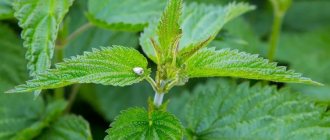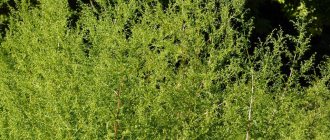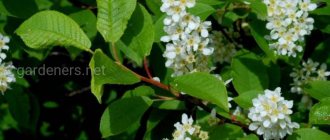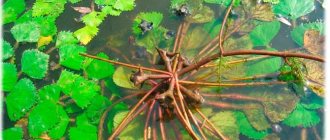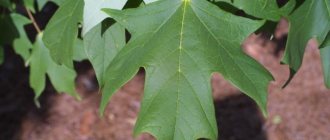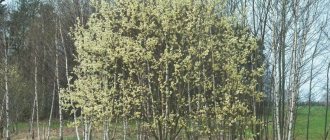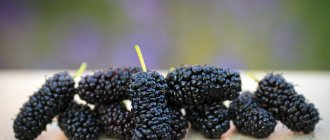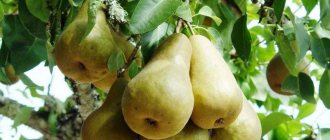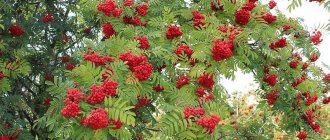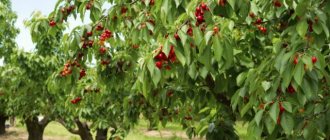Alder is a common species of deciduous tree, a close relative of birch. Sometimes these plants are even confused due to the similarity of the thin light bark and catkins.
A modest, unremarkable tree in the summer is overshadowed by a riot of greenery and, as a result, remains “invisible” to people. But in winter and early spring, the small brown bumps on the branches and the light gray lichen-covered bark stand out against the bleak landscape.
Alder is a unique tree that fertilizes barren soil and makes it suitable for other plants. Thus, alder forms mixed forests as other trees follow it into the empty soil. The plant also supports and provides nutrients to wildlife.
Due to the characteristics of the wood and the medicinal properties of the leaves and bark, this tree is popular in construction, industry and medicine.
What does an alder tree and its leaves look like?
Like birch, this tree is fast-growing and short-lived: the average lifespan is 60 years, but there are also long-livers with an age of up to 150 years.
The plant reaches a height of 20-30 meters.
The trunk of young trees is slender with smooth gray bark, often two or three main trunks fused together. In older plants, branches become crooked and cracks appear in the bark.
The leaves are dark green with jagged edges, quite long - from 3 to 9 centimeters, shiny and sticky to the touch. They come in round and oval shapes, similar to a tennis racket. Until late autumn, the leaves retain their color and either fall green or turn brown and dry out.
Alder is monoecious - this means that on the same tree there are both male and female flowers, which are shaped like earrings.
Male flowers are yellow-brown and long - from 5 to 10 centimeters, hanging from a branch in 4-5 pieces. Women's earrings are much smaller in size - about 1 centimeter, erect and round, grouped in 3-8 pieces. By the beginning of ripening, their color turns from green to purple or red.
Ignition temperature
The combustion heat of alder wood is 4.1 kWh/kg. Alder firewood flares up quickly enough, due to the lack of resin it does not emit fumes, burns for a long time and produces a hot flame. Alder firewood has a delicate aroma that lasts for years.
Due to its distinct smell, alder shavings are used for smoking meat and fish. Sawdust generated during the processing of alder is used to produce pressed briquettes used in fireplaces. The thermal conductivity of alder wood reaches the level of 0.15–0.17 W/(m×K).
Maturation and reproduction
Flowering begins in the spring - in March or early April, earlier than new leaves appear, or simultaneously with them, which promotes better pollination. Male catkins release pollen, female flowers are mainly pollinated by the wind, and to a small extent by bees.
The pollinated flowers are green, egg-shaped fruits measuring approximately 1.5 centimeters in length. By October they ripen and become dark brown and hard, similar to the cones of coniferous trees. They produce flat seeds with air pockets and two wings, allowing them to fly in the wind and float in water.
The seeds germinate on the surface of the water, and when they wash ashore, they take root there. Empty cones remain on the tree for a long time, including in winter, which is a distinctive feature of this plant.
Preparation and collection of cones
The most favorable time for harvesting cones is the end of autumn. However, you can continue collecting them until March. Directly collecting cones has certain features: first you need to carefully trim the ends of the branches with cones with pruners, and then collect the fruits from them. Cones lying on the ground do not have the required properties, so they cannot be used. After collecting, the cones are placed in an even layer in the attic or under a canopy, where there must be good air access. When it’s quite warm outside, you can dry the pine cones in the open air, remembering to stir them periodically. When properly dried, the fruits retain their medicinal properties for 3 years.
Where does alder grow
Alder grows in the middle latitudes of the Northern Hemisphere: in Russia (from the European part to the Far East), North America, Great Britain, and Europe. Less common in North Africa and Asia. South America and even in the north (Norway).
The tree prefers moist, damp places and grows along rivers and streams, near ponds, lakes and in wetlands. You can almost always determine from it that there is water nearby, and vice versa, when you see a body of water, you can find alder nearby.
It also grows in dry places, on the edges of forests and even in the mountains. Each climatic region is dominated by certain plant species. Depending on this, their appearance also changes; for example, in the mountains, alder is a shrub.
Alder as part of a natural complex
These trees approximately grow up to 100 years. Although there are also centenarians who delight with their appearance for 150 years. Their favorite areas for germination are places with moist soil. Therefore, alder can often be observed on the banks of various bodies of water.
If a combination of favorable factors occurs, then entire thickets - alder forests - can grow. In the northern regions, alder has grown like a coniferous tree. In the southern regions it has a rather small representation, therefore it is part of mixed forests along with beech and oak. Also, this tree feels great with other representatives of forests - spruce, birch, aspen, linden and oak.
Alder can be used both for decorative purposes and is also interesting as a honey plant. During formation, the tree produces leaves and buds enriched with resinous substances, which are used by bees as raw materials to create propolis.
You can find a use for dried alder leaves, as they can be used as feed for livestock.
Properties and features of alder
Alder fertilizes the soil due to its ability to fix nitrogen. This is achieved through a friendly relationship with the bacteria Frankia alni, which live in nodules on the roots of the tree. They absorb nitrogen from the air and give it to the tree, and the alder supplies the bacteria with carbon, which they receive through the process of photosynthesis. As a result, the tree processes the resulting nitrogen into soil nitrates, which nourish both the alder itself and the soil around it through the annual accumulation and decomposition of litter (leaves and branches). Thanks to this feature, the tree improves any soil, even poor and dry: sandy, clayey, gravelly.
Alder has a high growth rate - up to 90 centimeters per year when the plant is young. This advantage allows you to speed up wood production, as well as quickly grow dense forests after fires, deforestation, on mountain outcrops, and abandoned pastures.
Alder is a moisture-loving plant; it is resistant to prolonged exposure to water and does not rot. The roots of the tree grow only 20 centimeters deep, but spread across the surface in breadth. This ability helps stabilize the banks of rivers and lakes, prevent soil erosion, and fight floods.
Alder forests often serve as natural fire breaks because these trees are much less flammable than conifers.
Their crown and fallen leaves do not transmit fire well, and the bark, although thin, is stable enough to protect the tree from light surface fires.
Alder supports habitat for animals and plants and provides a diversity of life:
- catkins are an early source of pollen and nectar for bees;
- the seeds remaining in the cones are winter food for birds;
- roots exposed in the water shelter fish from predators and form cozy nests for otters;
- Falling leaves, which quickly decompose in water, are a source of nutrients for caddisfly larvae, stoneflies and water beetles. They, in turn, are eaten by fish;
- the bark is a food product for beavers, and the branches are building material for dams;
- seedlings - food for deer and elk from autumn to early spring;
- trees are hosts for moth and butterfly larvae;
- Various types of mosses, lichens and fungi grow on the bark.
Chemical components
Alder wood, like most of the hardwood group, consists of organic substances and mineral compounds. Alder wood also contains unique tannins, referred to as polyphenols. After cutting down a tree, these polyphenols upon contact with air are oxidized and converted into phlobaphenes.
It is the phlobaphenes that determine the changing color of the tree from white to reddish. Phlobafens also give wood high resistance and strength in water. Alder wood is also rich in tannins; these compounds, when reacting with certain chemical reactions with heavy metal salts in water, form unique compounds that increase the strength of the wood.
Due to these elements and properties formed after cutting the trunk, alder wood is little subject to rotting under conditions of use in an aquatic environment and is resistant to the activity of many pathogenic microorganisms for plants.
Types of alder
Alder has numerous species diversity: this genus of trees includes up to 40 species of plants. Three of them are considered the most common: black, gray, red.
Black alder
Black alder gets its name from the dark gray hue of its bark. Its Latin name Alnus glutinosa translates to "sticky" and symbolizes the sticky young leaves and shoots.
Places of distribution: European part of Russia, Europe, Western Asia, North Africa and North America. It is listed in the Red Books of Moldova, Kazakhstan, and the Omsk region, although in some geographic regions, for example, in the USA, it behaves aggressively (suppresses other plants), and in New Zealand it is even considered a weed.
It prefers areas abundantly moistened by running or groundwater: on the banks of rivers, lakes, springs, at the bottom of ravines, less often in swampy areas, since it does not tolerate standing water. A light-loving and frost-resistant tree, demanding on the soil: it does not grow on dry and poor soil.
It grows from 20 to 35 meters in height, the trunk diameter is up to 90 centimeters. The crown reaches 12 meters in diameter, in youth it is pyramidal or ovoid in shape, in adulthood it is round. The branches grow almost at right angles to the trunk.
Life span is from 80 to 100 years (there are centenarians up to 300 years old).
The leaves are dark green, round, shiny, with a serrated edge. Male catkins are long and drooping, female flowers are small and cone-shaped. The tree blooms in April, ripens by November, and seeds fall out only the following spring.
The tree is grown to create forests on moist soils, reduce the temperature in water bodies and stabilize the level of nutrients in them. In gardening it is used as decorative single plantings.
Gray alder
Gray alder gets its name from the color of its bark, which remains smooth and gray until old age. The underside of the tree's leaves is also gray. The Latin name Alnus incana translates as “gray alder.”
Places of distribution: cold regions of the Northern Hemisphere - Europe, Asia and North America. In Russia it grows in the north of the European part and throughout the entire territory from Siberia to Kamchatka.
Does not require moist soil, can grow in poor soils, abandoned fields, mountain slopes and marshy regions, but prefers moist, calcareous soil. The tree is more light-loving and frost-resistant than black alder.
It is a shrub or low tree no more than 20 meters in height. The trunk diameter does not exceed 50 centimeters, the crown is ovoid and narrow.
The average lifespan is 60 years, sometimes living up to 100. This is a short-lived plant, as other tree species quickly replace it.
The leaves are oval or ovate, matte, green on the outside, grey-green, pubescent underneath. Men's earrings are long and dangling, women's earrings are small and oval. Unlike other alder trees, which have yellowish male catkins, the gray alder has reddish-purple male catkins. The tree blooms several weeks earlier than black alder and ripens in late autumn.
Grown to strengthen river banks, slopes and ravines. The tree bears fruit abundantly, and the seeds spread easily and germinate quickly, due to which gray alder is used to colonize clearings and fires, and forms temporary plantings that are replaced by primary plants. The tree is also grown in parks and gardens.
red alder
The name red alder comes from the rusty-red color that the wood acquires after being felled or on cut, scratched, cracked bark. The Latin name Alnus rubra is translated as “red alder”.
Places of distribution: in North America, on the western coast of the Pacific Ocean from Alaska to California.
On the coast, red alder grows on cool, damp slopes. A little inland, the tree is located along river banks and in swampy areas. The plant prefers well-moistened soil rich in nutrients and does not take root well in dense clay soil.
This is one of the largest trees in the world, its height reaches 30 meters. The trunk diameter is almost 50 centimeters.
The average lifespan is 100 years.
The bark is smooth, practically without cracks, and ash-gray or brownish-gray in color. The leaves are grayish-green, ovate, pointed, with jagged edges. Distinctive features from other varieties are that the edges of the leaves bend down and turn yellow before falling. Men's earrings are reddish, long, hanging. Female flowers are smaller, stand upright during the flowering period, and also droop the rest of the time. The fruits ripen by autumn, the seeds scatter in late autumn and winter.
It quickly colonizes areas after fires or clear cuttings, but at the same time prevents the growth of coniferous plantations. The tree is often planted as an ornamental plant.
Use in folk medicine
All parts of the tree have medicinal properties. The cones begin to be harvested in late autumn, when they are fully ripe. They are cut and dried at room temperature.
When properly prepared, the fruits should have an astringent taste and be dark in color.
- Leaves begin to be harvested in early summer. They contain essential oils, tannins and organic acids. They are used as a hemostatic, diaphoretic and antimicrobial agent.
- A decoction of alder fruits is used for ailments of the gastrointestinal tract, allergies and rheumatism. The infusion helps with colitis and digestive disorders, for cleansing the skin and healing wounds.
Alder has proven itself well as an expectorant for bronchitis and tracheitis, antipyretic and diaphoretic for colds.
Preparations made from alder are usually safe for human health. Contraindications include individual intolerance, and an overdose can have a negative impact on health.
Scope of wood application
Alder wood, although not very strong, is light, soft and porous with a uniform structure, which makes it easy to process. This advantage is used to make:
- paper;
- fibreboards;
- plywood and veneer;
- carved and turned products: sculptures, panels, pencils, dishes, toys, boxes, trays, furniture handles.
When cut, the wood is initially light, but soon after contact with air it acquires a beautiful dark orange hue, which is why the wood is widely used in the manufacture of furniture and window frames.
Wood is highly permeable, so it is easy to impregnate during the process of painting or preserving, and lends itself well to varnishing, polishing and staining. If you cover it with stain, the wood will acquire a beautiful color that imitates valuable types of wood, which is valued in restoration work.
Alder is resistant to prolonged exposure to water and does not rot; on the contrary, it becomes stronger when wet. This feature allows the wood of this tree to be used for the construction of bridges, underwater foundations (for example, piles and supports in Venice and Amsterdam), sluice gates, as well as wells and barrels.
Alder has a special relationship with fire:
- Dry wood burns well and has high heat transfer. Gray alder firewood is even sometimes called royal wood, since it was used to heat the stoves in the royal chambers.
- Wood smokes well and does not spoil the taste of food, which is why it is used for smoking fish, meat, and coffee.
- High-quality charcoal is obtained from alder using dry distillation, which is used for drawing.
When dried, wood does not lose its properties and does not lead to defects. Thanks to this feature, musical instruments, mainly electric guitars, are made from alder.
Alder is valued for the tone it gives to the sound: dense and balanced. The sound quality is superior to mahogany and in no way inferior to resonant spruce wood.
Bark and wood are used for tanning leather due to the tannins they contain. In addition, bark, catkins, shoots and the wood itself are used to dye leather. They are used to impart yellowish, brown, fawn, green and pink shades.
Alder is an often underappreciated plant, but at the same time it brings great benefits to both the environment and people. This tree managed to subjugate three natural elements: water, earth and fire. Waterlogged soil leads to the death of most plants, but not alder, which draws its strength from water.
Alder is a pioneer tree, the savior of a tormented and infertile land, often at the cost of its own “life” it populates empty places and paves the way for other plants, after which it quietly moves aside. And finally, alder prevents the outbreak of fires, thanks to its relative resistance to fire, but if necessary, when a person needs it, it is ready to warm with its warmth. Besides everything else, this tree is also a talented rock musician who makes people happy with his beautiful sound.
Density
Alder, regardless of its type and place of growth, is a tree species with high uniform density. That is, the difference between the structure of the earliest annual layers of the plant compared to the most recent ones is insignificant. With a standard humidity of 12%, the average density reaches 525 kg/m3. After the complete drying process, the density reaches 595 kg/m3.
In terms of its main strength parameters, alder wood is superior by several considered indicators to such popular trees in logging as aspen and linden. Also, after proper processing at enterprises and preparation, alder is almost as strong as pine and spruce wood.
The average value of different density indicators at natural humidity of 125% is equal to:
| Features of the measurement | Indicators of density, elasticity |
| When measuring wood at the moment of static bending | 79 MPa |
| At the moment of stretching along the main fibers | 97 MPa |
| When stretched in the radial, that is, across the fibers, direction | 7.2 MPa |
| During compression along the fibers | 45 MPa |
| Modulus of elasticity of properly prepared alder wood during static bending | 14.2 GPa |
Alder wood standards according to GOST
The grade of alder wood already in the process of harvesting is determined by several parameters. This is the smoothness of the trunk, the number of knots and certain malformations, the most important of which include cracks and curvature of the trunk.
The grade of harvested alder wood largely depends on where the harvested tree grows and whether all conditions for standard wood processing are met during the manufacturing of lumber from it.
The price of alder wood and lumber made from it is estimated by experts at 4 points. The cost of this wood makes it possible to obtain cost-effective products from it that are used in various spheres of human life.
Harvesting, drying and medicinal properties of alder:
Color shades and texture of alder wood
If you look at a cut of freshly cut alder, you will notice that its color is almost white. After the alder lies in the air for a while in this form, its color begins to change. At first, sawn and prepared wood turns slightly pink, then it acquires different colors of red, ranging from the lightest, yellowish to deep brown.
The color change occurs due to the release of polyphenols, which in air are converted into a coloring pigment - phlobafen. After alder wood has undergone the correct, standard drying process, its color changes to chocolate.
Alder wood is valued by specialists for its homogeneous structure; it does not have a pronounced core; the annual rings on the cut are practically not separated from each other by any visible effect. The rays emanating from the middle of the tree are also faintly noticeable.
Due to the softness of the wood and its special absorbent parameters, blanks from this plant can be painted in any color shades. With proper processing and preparation of wood, craftsmen receive unique wooden crafts and products that, in their external characteristics, completely imitate expensive types of wood.


